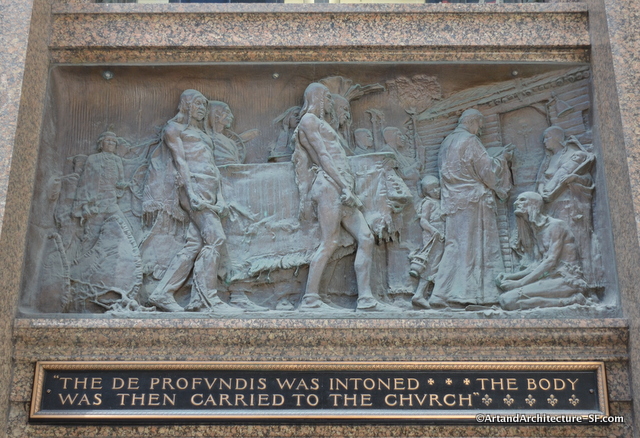125 W. Fullerton Parkway
Lincoln Park
Chicago, Illinois
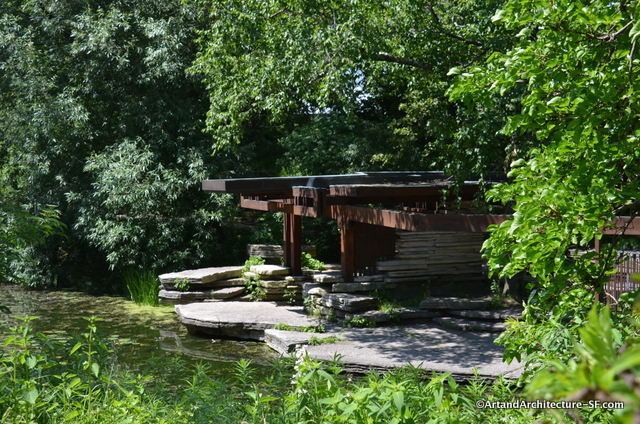
Chicago’s official motto is “Urbs in Horto,” which translates to “City in a Garden”, much of the garden aspects of this town can be attributed to Alfred Caldwell and his mentor Jens Jensen.
Lily Pond is the work of Alfred Caldwell. During the depression, Caldwell worked on and off for the Chicago Park District. It was a tumultuous relationship, but it was also steady work. In 1936, under the guise of the Park District and with WPA money Caldwell designed the Lily Pool.
Caldwell suggested that “besides being a nature garden,” the Lily Pool is “a geological statement.”
He explains: “The landscape of all Chicago was once a lake formed by the melting ice of the Late Wisconsin Glacier. These dammed-up waters finally broke through the moraine ridge at the southwest extremity of the area. This surging torrent carved out the underlying strata of Niagara limestone. The present Des Plaines River, in part follows that channel; and the stone bluffs are a veritable statement of the natural forces that created the terrain of Chicago.”
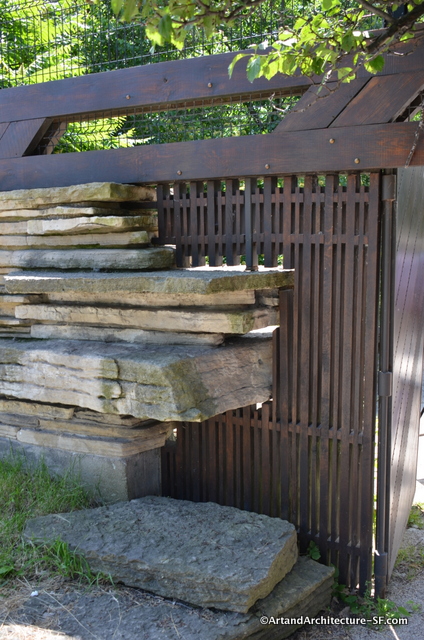
The front gate
You enter this small oasis through a stunning wood and stone gate. Originally there was to be a Prairie style lantern at the entrance to the park, placed within the stone entryway, this was eliminated from the original project.
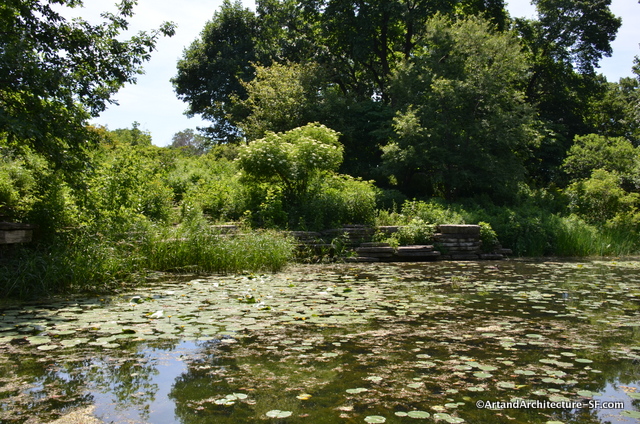 The center of the park is a large body of water, it was called the prairie river by Caldwell. The intent was to emulate the melted glacial waters that had cut through the Niagara limestone. The curved shape gives the illusion of a larger space with views and scenery continuously changing.
The center of the park is a large body of water, it was called the prairie river by Caldwell. The intent was to emulate the melted glacial waters that had cut through the Niagara limestone. The curved shape gives the illusion of a larger space with views and scenery continuously changing.
On the northwest side, to the right as you enter, Caldwell created a small waterfall out of slabs of limestone. Caldwell suggested that, “A body of water presumes a source. Hence the waterfall.”
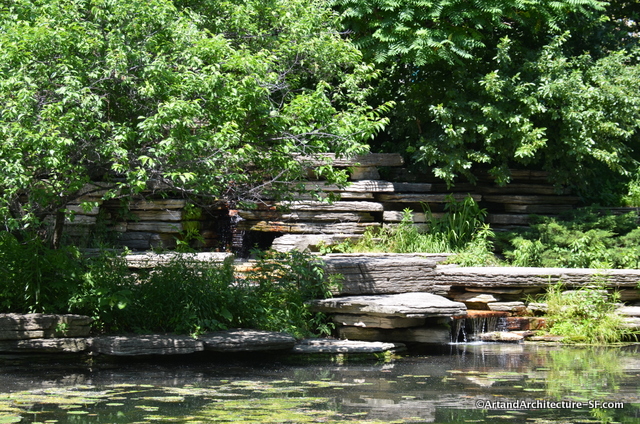
The waterfall
On the southeast side of the river is a circular round bench made of stone called a council ring. Although Caldwell included council rings in many of his park plans, this is the only one in Chicago that followed his exact specifications.
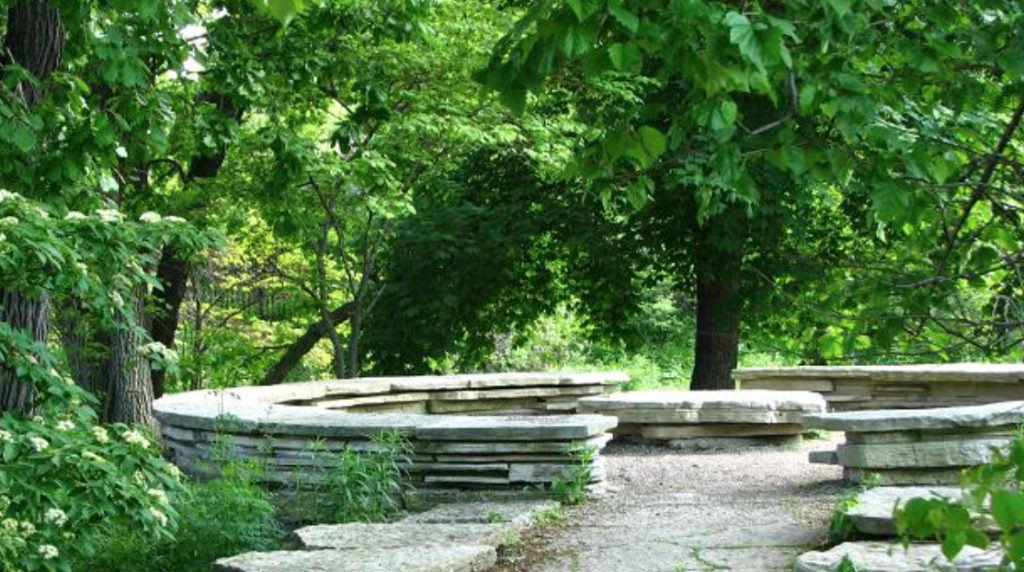
The Council Ring
The most prominent feature is the wood pavilion. This Prairie style edifice is often wrongly attributed to Frank Lloyd Wright.
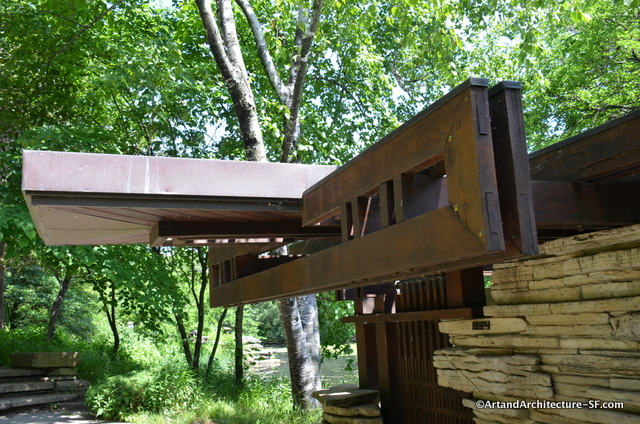
Two stone and wood shelters are joined together by a large horizontal wood beam, to Caldwell “The spreading horizontal structure is like a tree, rooted in a rock ledge.”
The Lily Pool in Lincoln Park is the most fully realized surviving example of the work of landscape architect Alfred Caldwell. The disciple of renowned Prairie style landscape designer and conservationist, Jens Jensen, Caldwell “…imbibed deeply of Jensen’s philosophy. A total respect for the processes of nature was the basis. The landscape architect was an artist, or more correctly a poet, who would interpret and reveal nature, by using its materials.” … Richard Guy Wilson – Commonwealth Professor in Architectural History at the University of Virginia
There are two interesting stories regarding this project by Caldwell. The first is regarding the plantings.
The park service had decided to cut the budget for the wildflower plantings that Caldwell has proposed.
Caldwell later told the story: “So not to be beat, I talked it over with my wife. I had recently taken out an insurance policy for $5,000 dollars. I cashed in my insurance policy. I got $250 dollars. I went up to Wisconsin. I hired a truck. I had three or four people and they worked like mad for a whole day and a half. I loaded all these thousand and thousands of plants. I loaded them and brought them in all the way from Sauk County, Wisconsin. When I got back to the Lincoln Park Lily Pond, it was 6:00 pm on a Saturday night. We spread all the stuff out on the side of the slopes where they were to go. In the morning we planted them all. We finished the whole thing by 1:00 or 2:00 p.m. The lily pond was finished. The Juneberry trees were in blossom. It was like paradise.
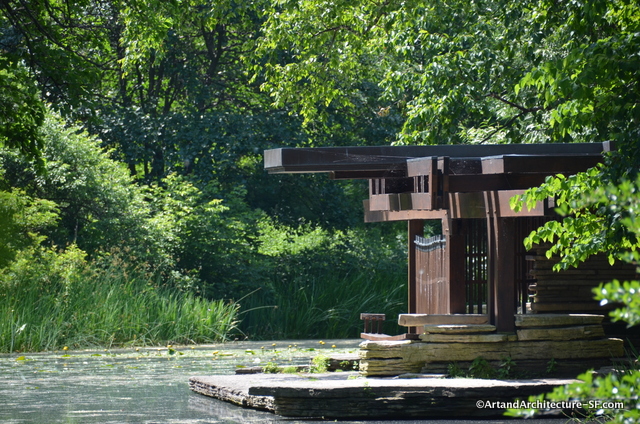 A second story, that comes down through Paul Finfer, a student of Caldwell’s, is of three men that would not only have a impact on Chicago and the world of architecture, but on Caldwell’s career itself.
A second story, that comes down through Paul Finfer, a student of Caldwell’s, is of three men that would not only have a impact on Chicago and the world of architecture, but on Caldwell’s career itself.
Caldwell explains that while working on the pool three mysterious men in black overcoats stood and watched. “They spoke in German. The tall one could speak a little English.”
As the men studied the pavilion at the Lily Pool, Caldwell approached. They pointed to the pavilion and asked, “Frank Lloyd Wright?” He thumped himself on the chest and replied, “No, Alfred Caldwell.” Caldwell remembered that one of the men was also intrigued with the way plants were growing between the crevices of the rocks. The three men left, and Caldwell “often wondered mightily about them.” It wasn’t until a couple of years later that Caldwell learned that they were Ludwig Mies van der Rohe, Ludwig Hilberseimer and Walter Peterhans, the famous architects and planners who fled Nazi Germany to settle in Chicago to teach at the Armour Institute (now Illinois Institute of Chicago).
***
Sadly, by 1946 the Park district had allowed the nearby zoo to encroach upon the pool. Exotic birds left droppings in the pool and destroyed much of the vegetation. This allowed invasive plants to take over cutting down on the sunlight, causing erosion and destroying the design created by Caldwell.
In 1997 a non-profit group was formed to raise funds and work with the park department to restore the Lily Pool.
During this period the original entry gate was replaced. White oak barn wood was used to match the original and photographs were carefully studied to ensure accuracy of the elements. Also, during the restoration, the light fixture was recreated and placed as Caldwell had envisioned.
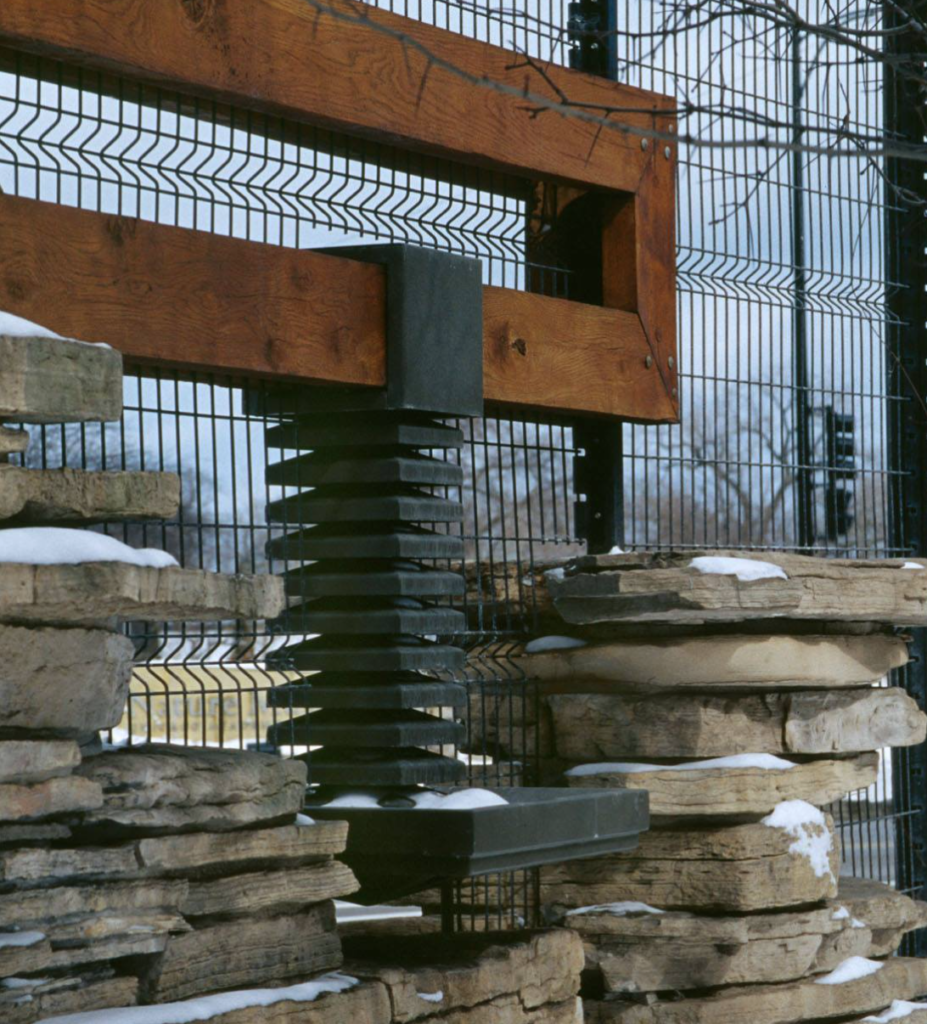
Caldwell’s entrance light fixture was recreated and added during the restoration. Photo courtesy of Wolff Landscape Architecture – Chicago.
Alfred Caldwell was born in St. Louis in 1903, he moved to Chicago when he was a young boy. He enrolled in University of Illinois in Champaign- Urbana, but quickly became disillusioned. After a few missteps and thanks to some well-intentioned connections, he found himself apprenticed to renowned landscape architect Jens Jensen. He worked as a superintendent for Jensen for 5 ½ years. During this time he met Frank Lloyd Wright and was asked to join Wright at Taliesen. Caldwell’s wife had misgivings and he turned down the offer, although he did spend a few weeks there.
By now the depression was beginning to rear its ugly head and Jensen could no longer keep Caldwell on. At this point he was hired for a large project in Dubuque, Iowa, this project was to be Eagle Point Park.
Fired in January of 1936, most likely because he just did not fit in, he returned to Chicago.
He decided to sit for the Illinois architects exam and began attending classes. His instructors were the three Germans dressed in black overcoats that watched over him while planting Lily Pond. Caldwell passed the exam without difficulty.
Caldwell designed scores of landscapes, he also taught for more than 35 years at the Illinois Institute of Technology and the University of Southern California and was a visiting professor at Virginia Polythechnic Institute. Despite all of this he remained relatively unknown. In a 1977 article, architectural historian Richard Guy Wilson changed all of that with his article “Alfred Caldwell Illuminates Nature’s Ways,” in Landscape Architecture Magazine.
“…as historians begin to inspect the [1930s] period it becomes increasingly obvious that certain strains of indigenous American creativity have been overlooked. Alfred Caldwell’s work encompasses the broadest definitions of landscape architecture, an activity not simply of plant types and topography, but a vision and philosophy of man and nature that is at the core of the American dream.”
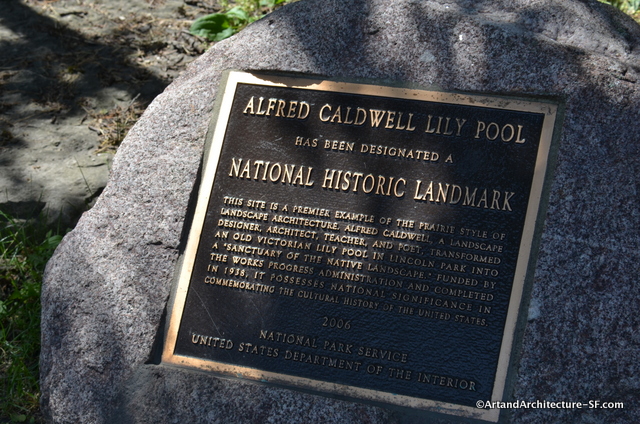
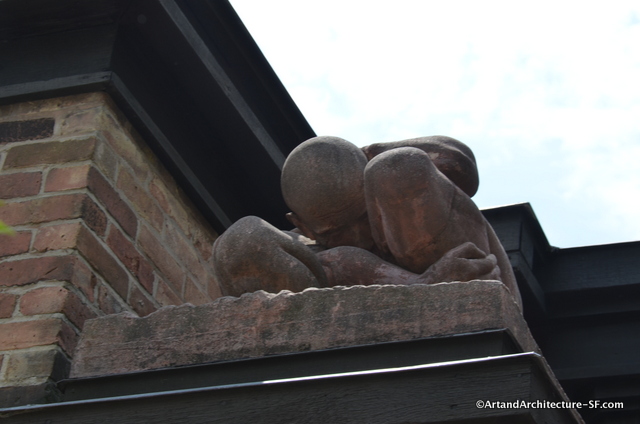 On the piers flanking the entry to Frank Lloyd Wrights 1898 architectural studio in Oak Park, Illinois, sit these two pieces, designed by Frank Lloyd Wright and executed by Richard Bock.
On the piers flanking the entry to Frank Lloyd Wrights 1898 architectural studio in Oak Park, Illinois, sit these two pieces, designed by Frank Lloyd Wright and executed by Richard Bock.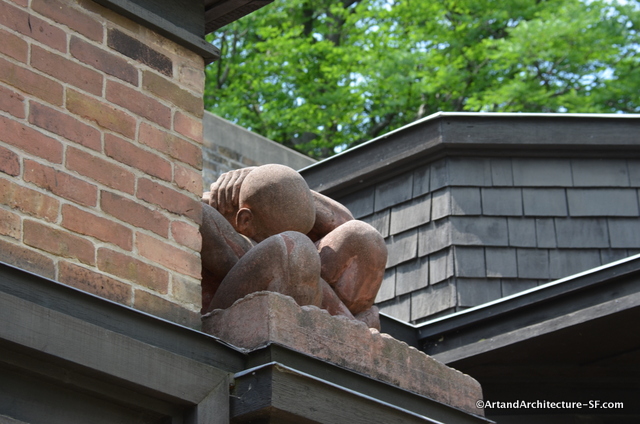 Bock spent three years at the Berlin Academy studying and later at the Ecole des Beaux Arts School in Paris. In 1891 he returned Chicago to establish a permanent sculpture studio. Almost immediately upon Bock’s return to America, he received three major commissions and for the World’s Columbian Exposition in 1893, he sculpted major architectural works for the Mining and Electricity Exposition Halls.
Bock spent three years at the Berlin Academy studying and later at the Ecole des Beaux Arts School in Paris. In 1891 he returned Chicago to establish a permanent sculpture studio. Almost immediately upon Bock’s return to America, he received three major commissions and for the World’s Columbian Exposition in 1893, he sculpted major architectural works for the Mining and Electricity Exposition Halls.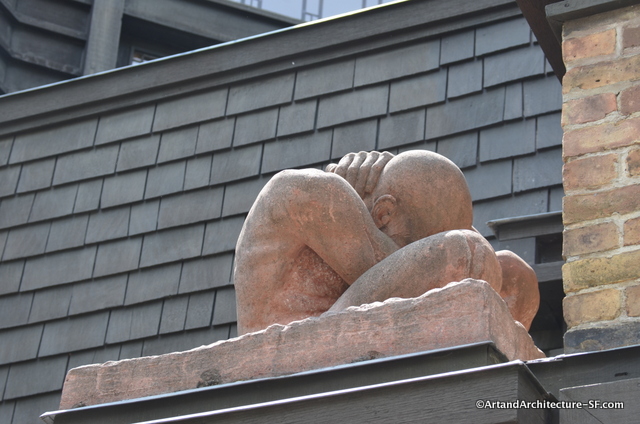
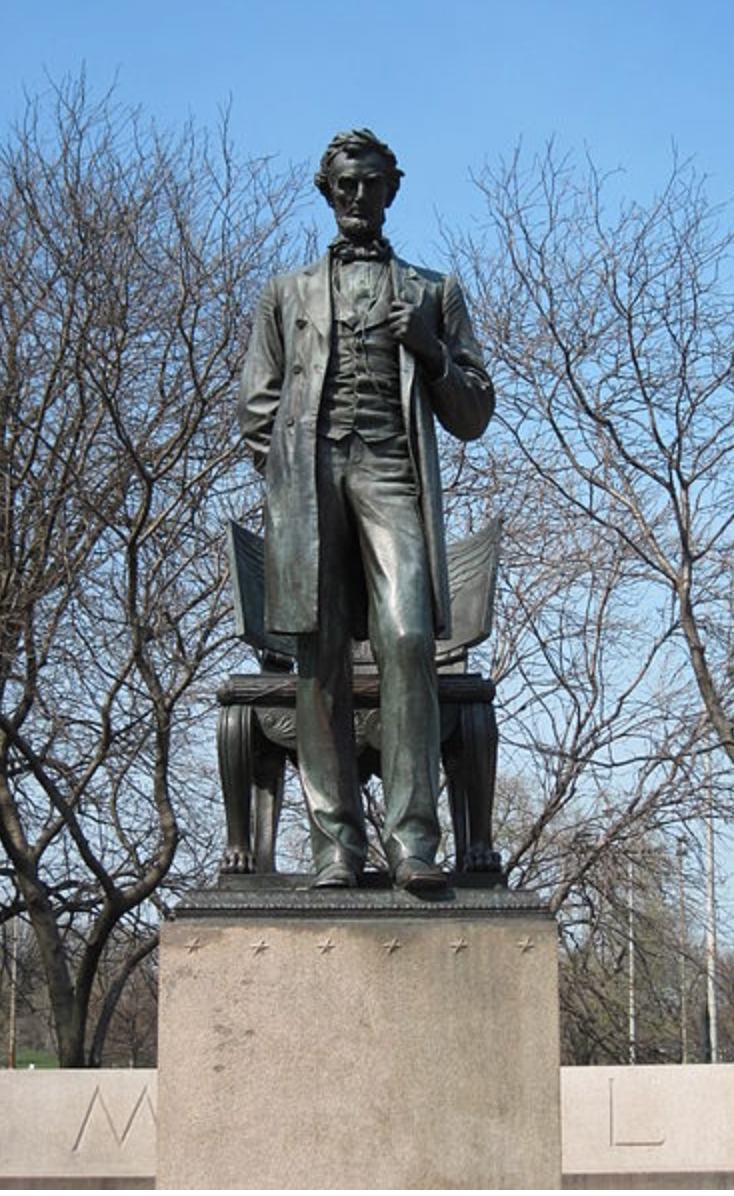
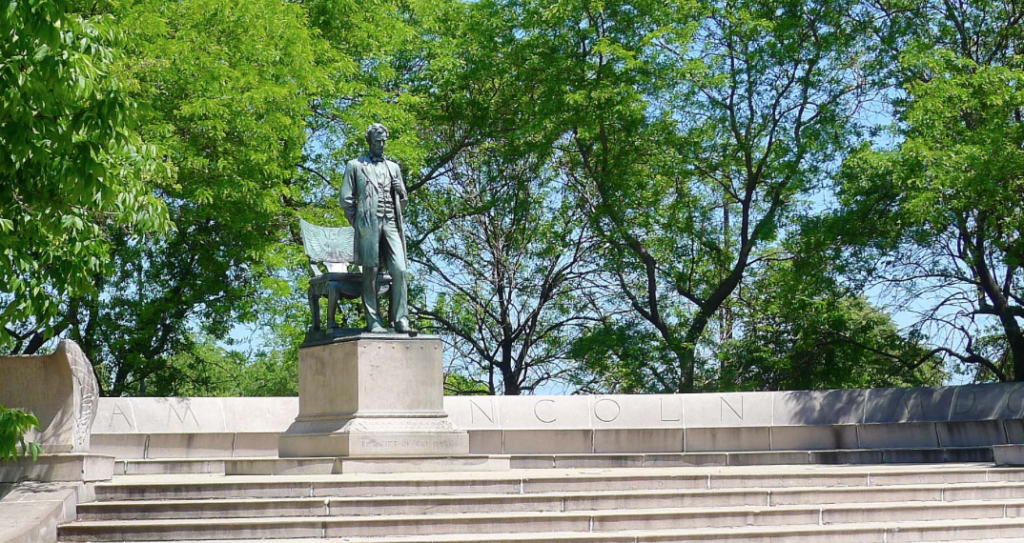 Architect, Stanford White, of the New York firm of McKim, Mead and White, designed the monument’s base. He added the long, curving exedra bench to encourage visitors to sit and enjoy the statue,
Architect, Stanford White, of the New York firm of McKim, Mead and White, designed the monument’s base. He added the long, curving exedra bench to encourage visitors to sit and enjoy the statue,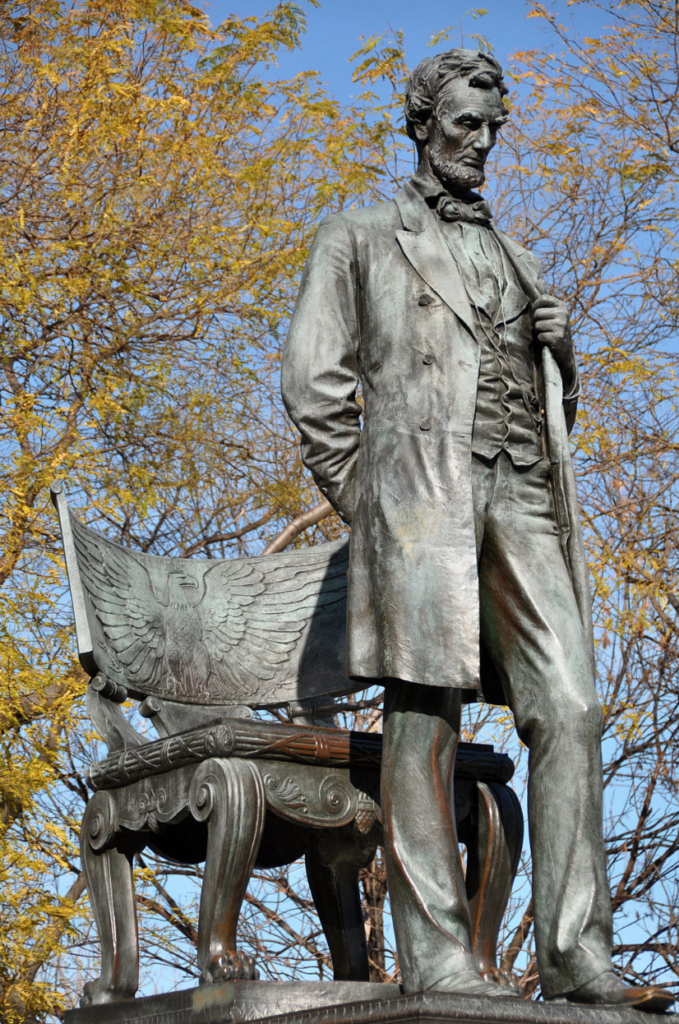
 According to the Chicago Parks Department:
According to the Chicago Parks Department: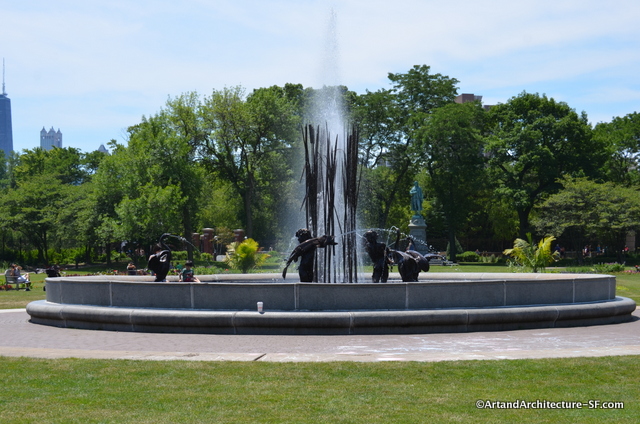 This whimsical fountain is known as both the Eli Bates Fountain and “Storks at Play”.
This whimsical fountain is known as both the Eli Bates Fountain and “Storks at Play”.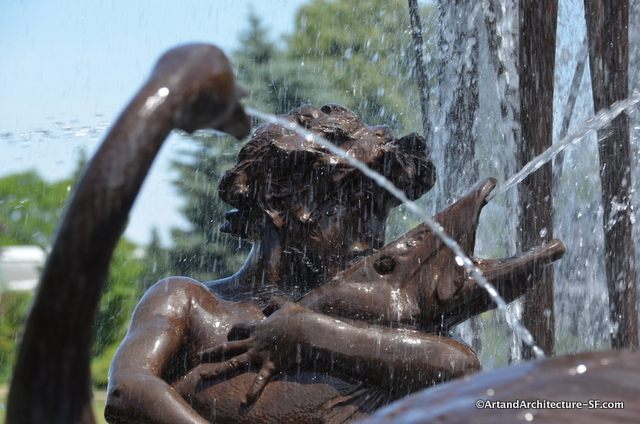 The figures for the fountain were cast by the Henry-Bonnard Bronze Company of New York.
The figures for the fountain were cast by the Henry-Bonnard Bronze Company of New York.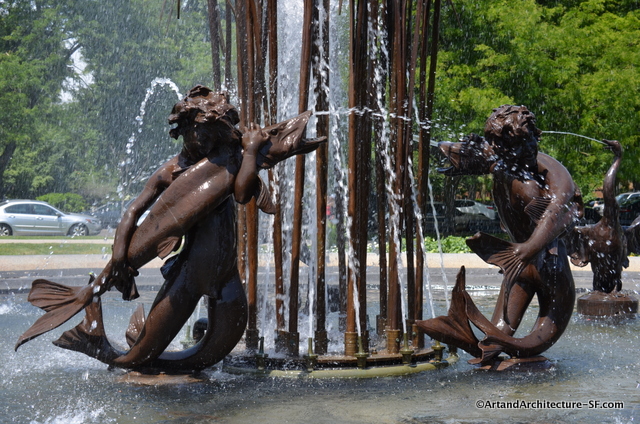 In 1888, Stanford White helped MacMonnies win two major commissions for garden sculpture, a decorative Pan fountain sculpture for Rohallion, the New Jersey mansion of banker Edward Adams, and a work for ambassador Joseph H. Choate, at Naumkeag, in Stockbridge, Massachusetts.
In 1888, Stanford White helped MacMonnies win two major commissions for garden sculpture, a decorative Pan fountain sculpture for Rohallion, the New Jersey mansion of banker Edward Adams, and a work for ambassador Joseph H. Choate, at Naumkeag, in Stockbridge, Massachusetts.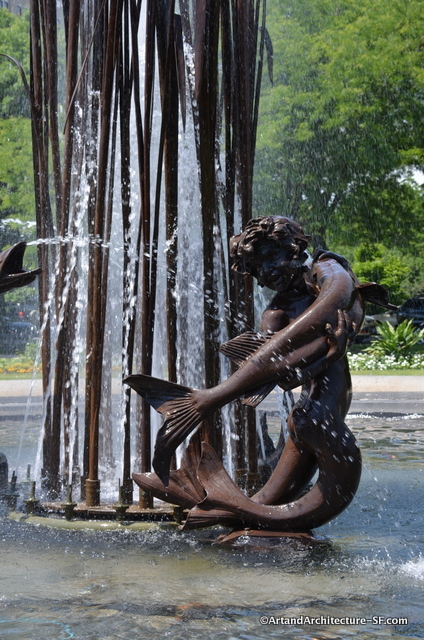 In 1894, Stanford White brought MacMonnies a commission for three bronze groups for the Soldiers and Sailors Memorial Arch in Brooklyn’s Grand Army Plaza.
In 1894, Stanford White brought MacMonnies a commission for three bronze groups for the Soldiers and Sailors Memorial Arch in Brooklyn’s Grand Army Plaza.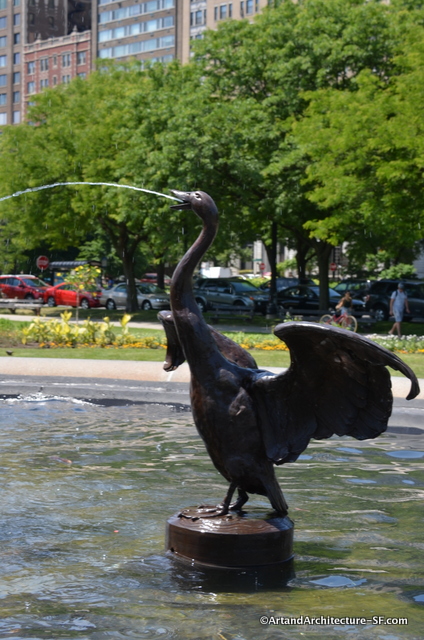


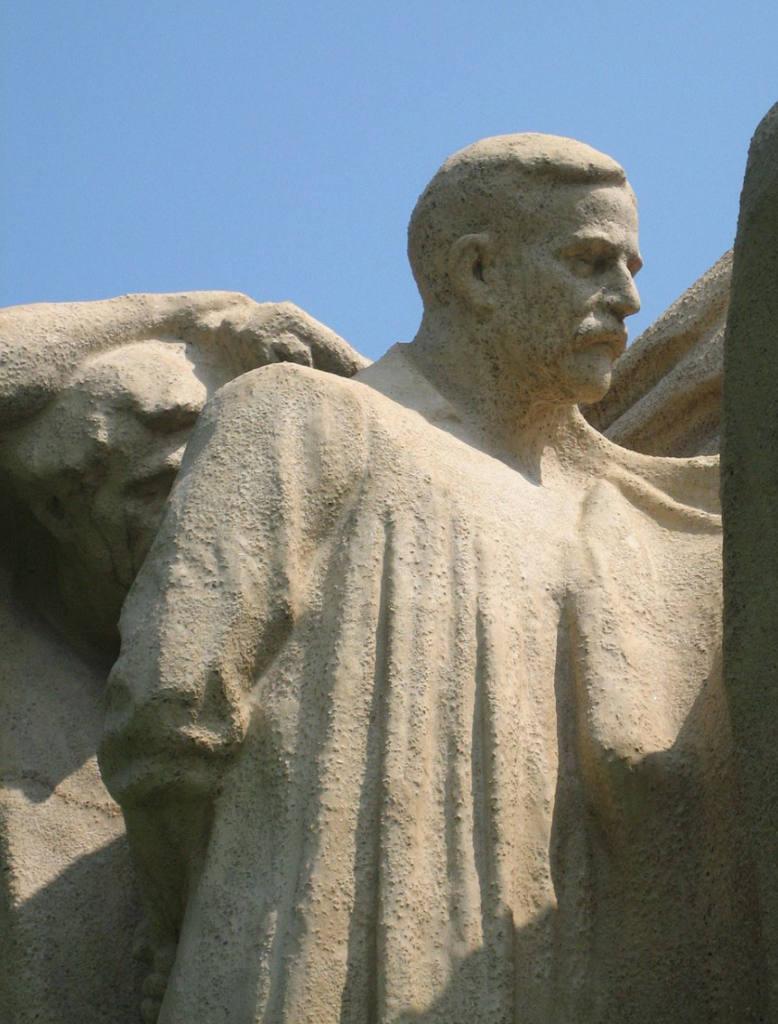
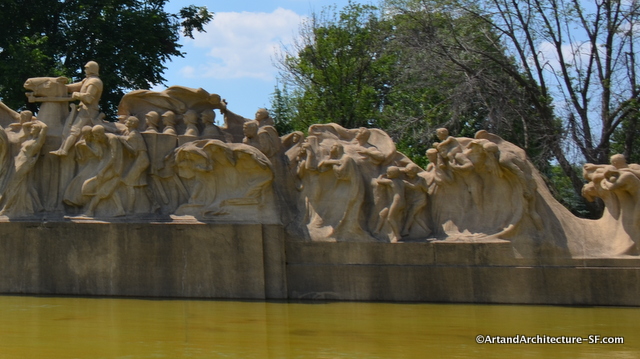 Lorado Taft initially conceived a sculpture carved from granite or Georgia marble, however, the trust only allotted enough funds for a concrete structure.
Lorado Taft initially conceived a sculpture carved from granite or Georgia marble, however, the trust only allotted enough funds for a concrete structure.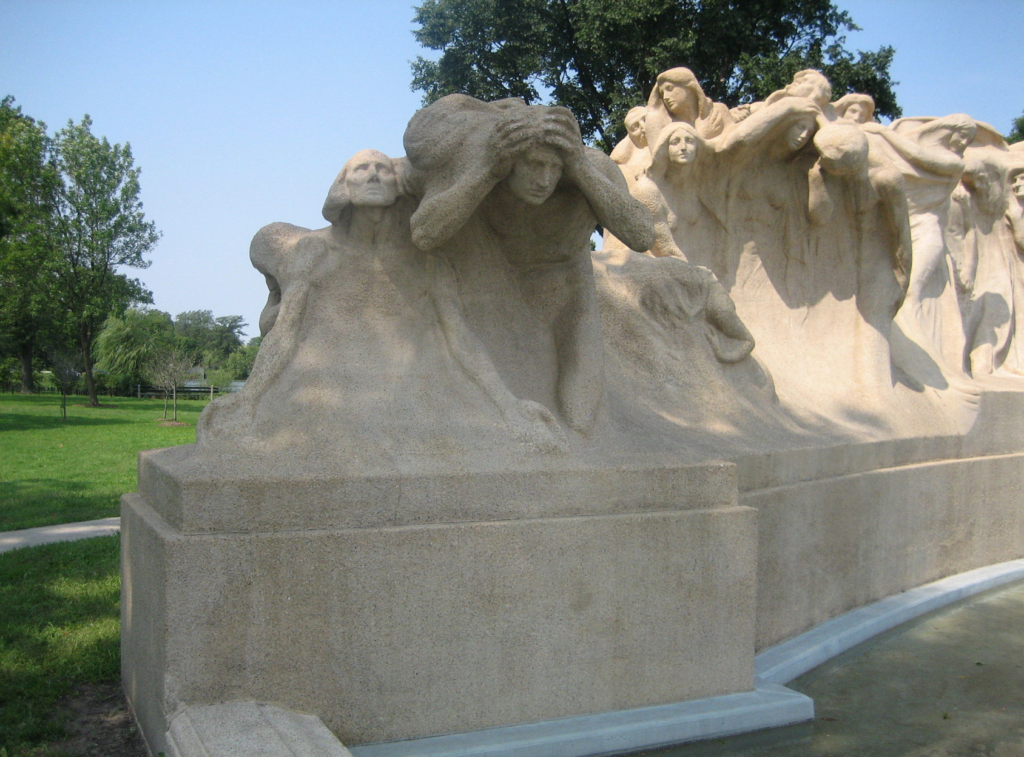 Lorado Zadoc Taft was born in Elmwood, Illinois, in 1860 and died in his home studio in Chicago in 1936.
Lorado Zadoc Taft was born in Elmwood, Illinois, in 1860 and died in his home studio in Chicago in 1936.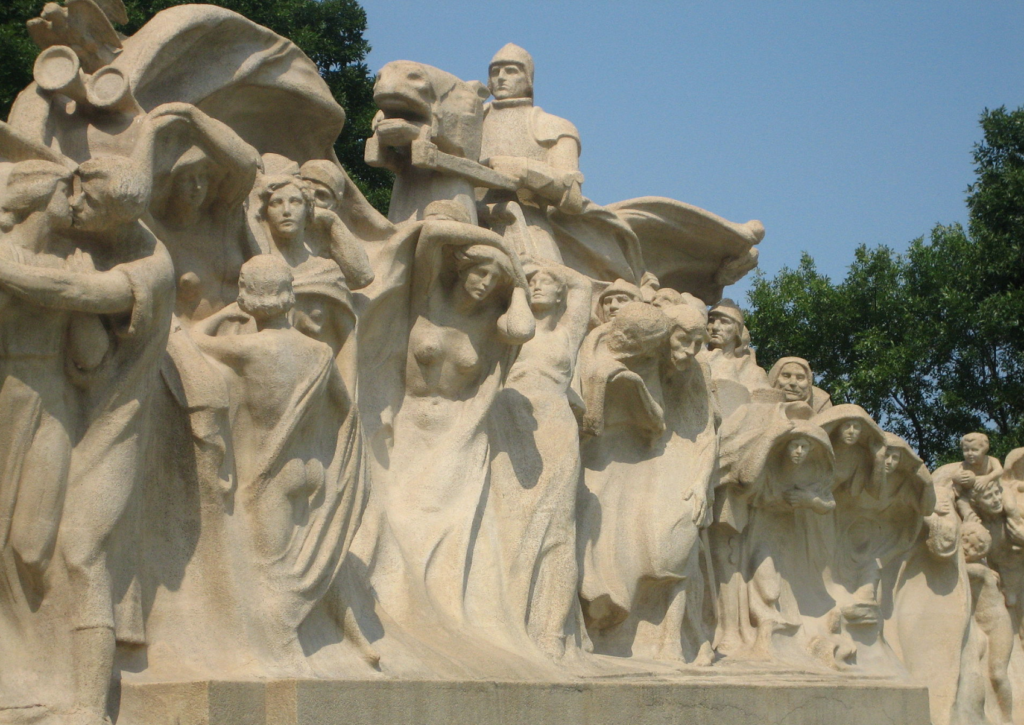 Taft’s body of work is impressive. Some notable sculptures around Chicago include Eternal Silence and The Crusader both at Graceland Cemetery, and Fountain of the Great Lakes at the Art Institute. He also sculpted the Columbus Fountain at Union Station in Washington DC.
Taft’s body of work is impressive. Some notable sculptures around Chicago include Eternal Silence and The Crusader both at Graceland Cemetery, and Fountain of the Great Lakes at the Art Institute. He also sculpted the Columbus Fountain at Union Station in Washington DC.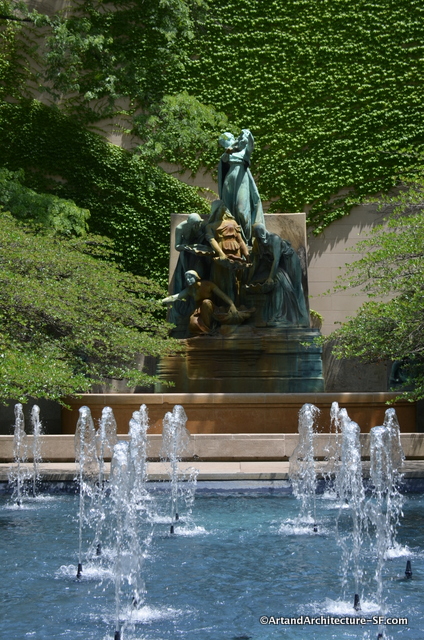
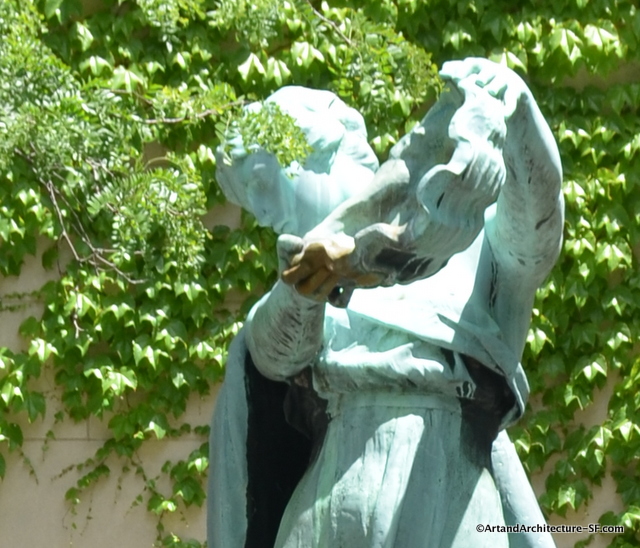
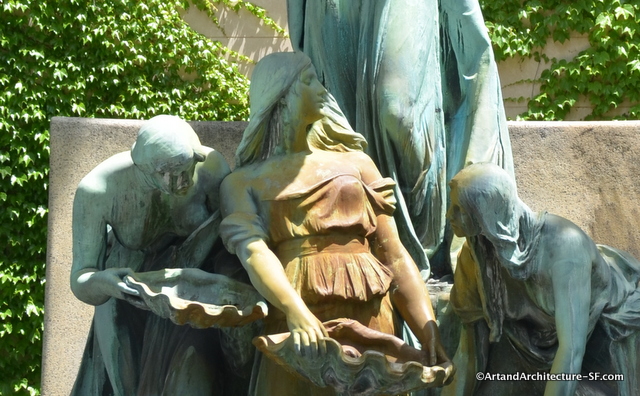
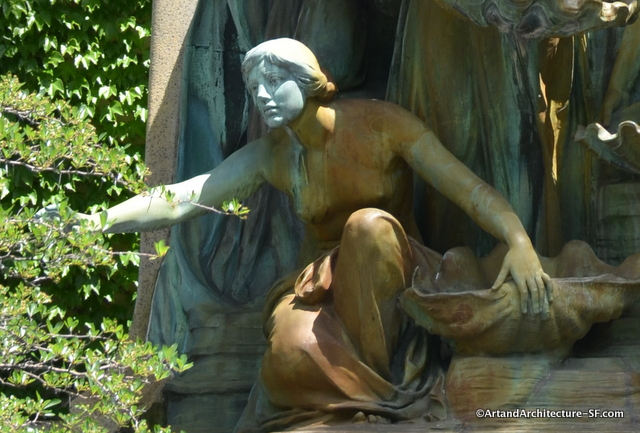
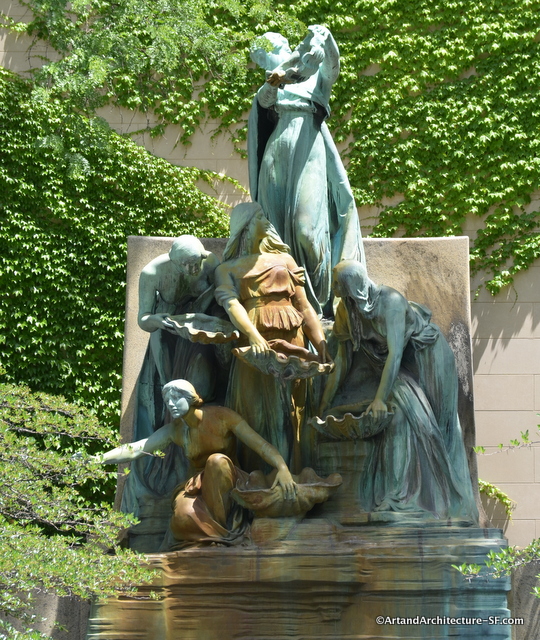
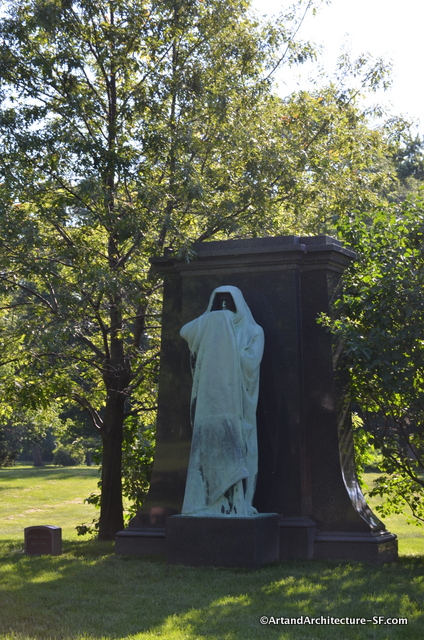 The Eternal Silence, (also called Eternal Silence or Statue of Death) marks the grave of Dexter Graves, who led a group of thirteen families that moved from Ohio to Chicago in 1831, making them some of Chicago’s earliest settlers. Graves died in 1844, seventy-five years before the creation of the statue, and sixteen years before Graceland Cemetery was founded; his body was presumably moved to Graceland from the old City Cemetery. The funds for the monument were provided in the will of his son, Henry, who died in 1907. The will provided $250,000 for a Graves family mausoleum, they received the statue instead.
The Eternal Silence, (also called Eternal Silence or Statue of Death) marks the grave of Dexter Graves, who led a group of thirteen families that moved from Ohio to Chicago in 1831, making them some of Chicago’s earliest settlers. Graves died in 1844, seventy-five years before the creation of the statue, and sixteen years before Graceland Cemetery was founded; his body was presumably moved to Graceland from the old City Cemetery. The funds for the monument were provided in the will of his son, Henry, who died in 1907. The will provided $250,000 for a Graves family mausoleum, they received the statue instead.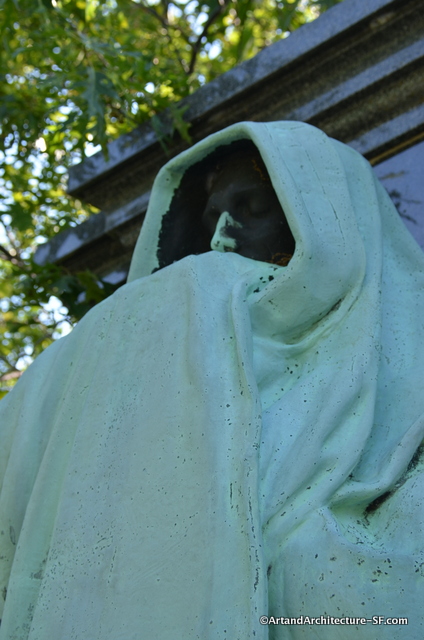 The statue was sculpted by Lorado Taft and cast by a Chicago foundry owned by Jules Bercham.
The statue was sculpted by Lorado Taft and cast by a Chicago foundry owned by Jules Bercham.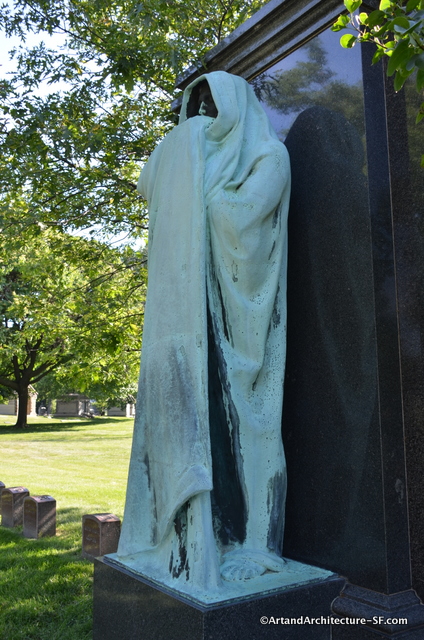
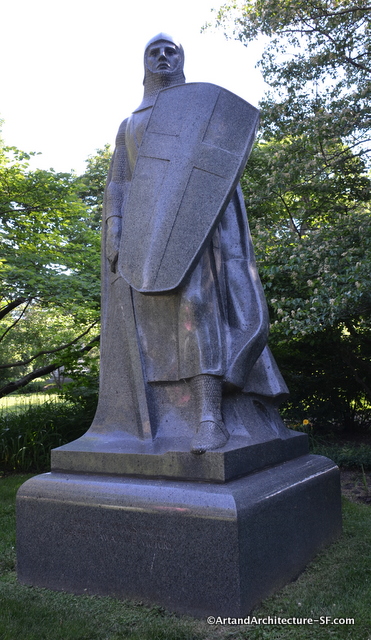
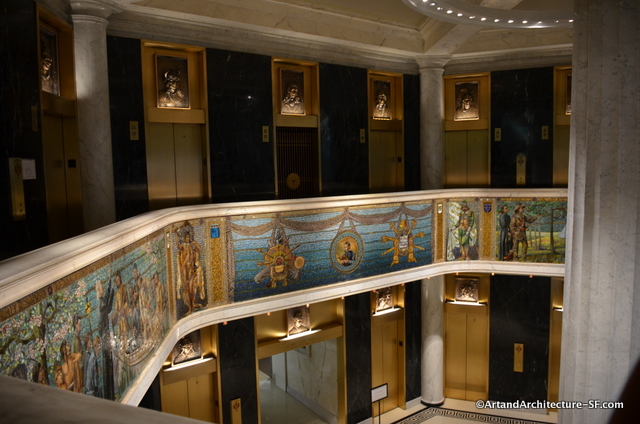
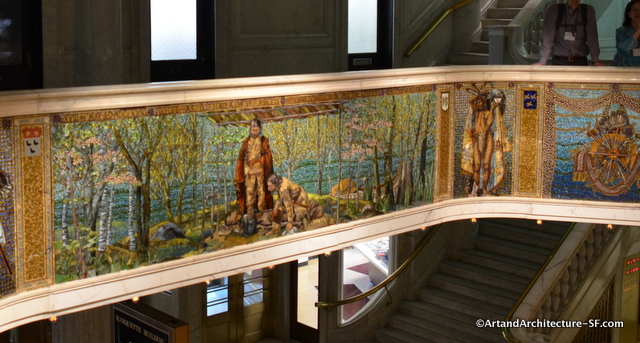 Jacob Adolph Holzer was a Swiss artist who worked for Tiffany as chief designer and art director, he was responsible for the design and execution of the Marquette murals.
Jacob Adolph Holzer was a Swiss artist who worked for Tiffany as chief designer and art director, he was responsible for the design and execution of the Marquette murals.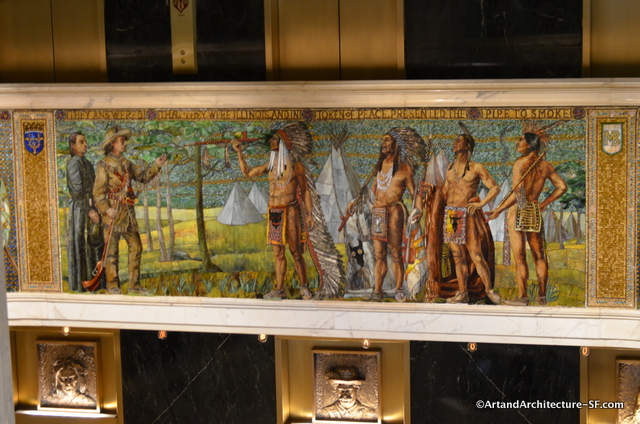 Holzer’s works include: in New York, the lobby of The Osborne, 205 West 57th Street. In Boston, the Central Congregational Church, 67 Newbury Street (1893), and perhaps the Frederick Ayer Mansion, Commonwealth Avenue (1899–1901). In Chicago, the Chicago Cultural Center, 78 East Washington Street, as well as the Marquette Building. At Princeton, his mosaics of subjects from Homer fill the rear wall of Alexander Hall. In Troy, New York, his stained-glass east window and baptistry mosaics can be seen in St Paul’s Church.
Holzer’s works include: in New York, the lobby of The Osborne, 205 West 57th Street. In Boston, the Central Congregational Church, 67 Newbury Street (1893), and perhaps the Frederick Ayer Mansion, Commonwealth Avenue (1899–1901). In Chicago, the Chicago Cultural Center, 78 East Washington Street, as well as the Marquette Building. At Princeton, his mosaics of subjects from Homer fill the rear wall of Alexander Hall. In Troy, New York, his stained-glass east window and baptistry mosaics can be seen in St Paul’s Church.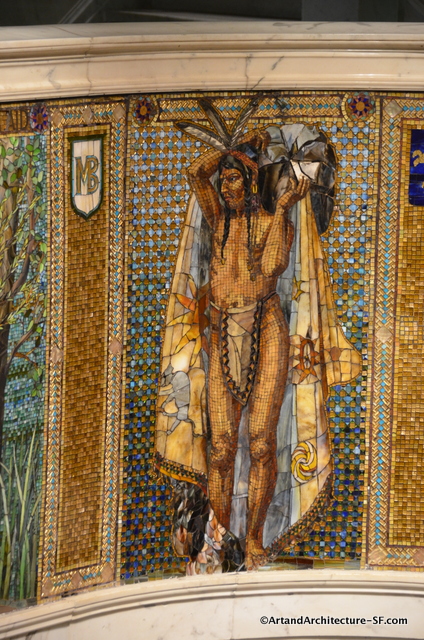
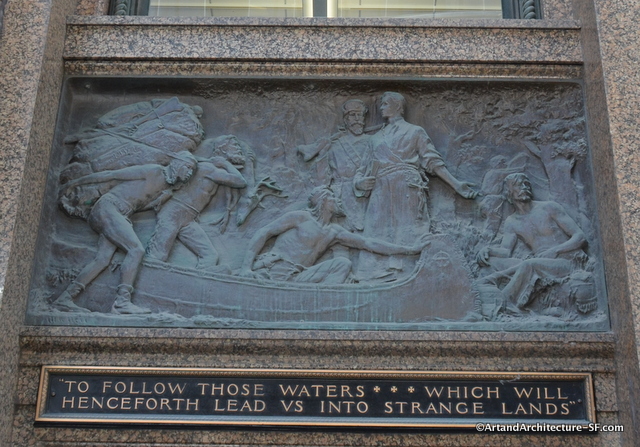 These four bronze plaques sit above the entry doors of the Marquette Building in Chicago. They were done in 1895 by Henry MacNeil (1866-1947). At the time MacNeil shared a studio in the building with painter Charles F. Browne.
These four bronze plaques sit above the entry doors of the Marquette Building in Chicago. They were done in 1895 by Henry MacNeil (1866-1947). At the time MacNeil shared a studio in the building with painter Charles F. Browne.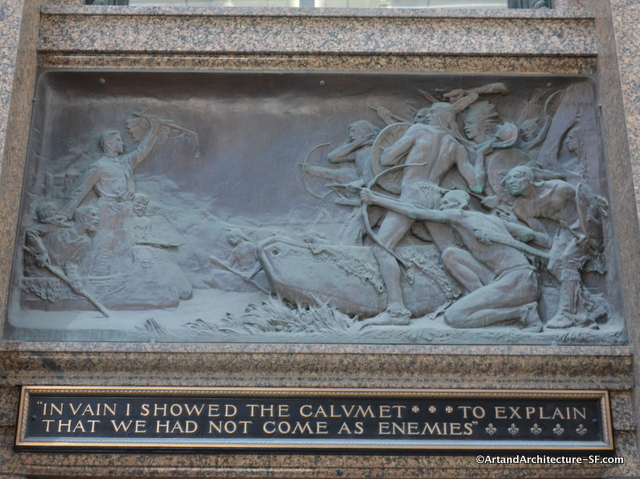 After attending one of Buffalo Bill’s Wild West Shows at the Worlds Fair he began depicting the American Indian throughout his art.
After attending one of Buffalo Bill’s Wild West Shows at the Worlds Fair he began depicting the American Indian throughout his art.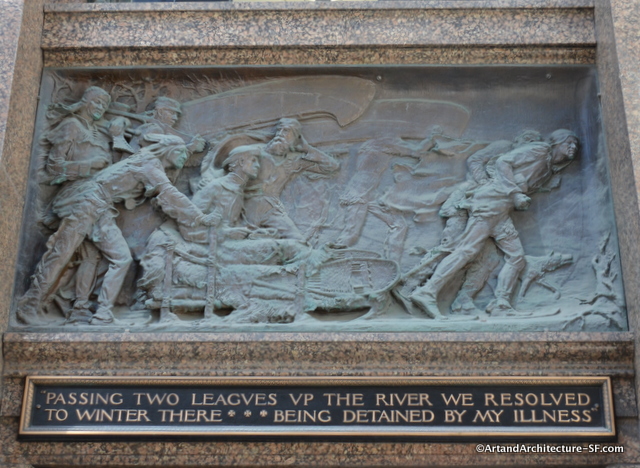 Perhaps his best known work is as the designer of the Standing Liberty quarter, which was minted from 1916 to 1930, and carries his initial to the right of the date.
Perhaps his best known work is as the designer of the Standing Liberty quarter, which was minted from 1916 to 1930, and carries his initial to the right of the date.